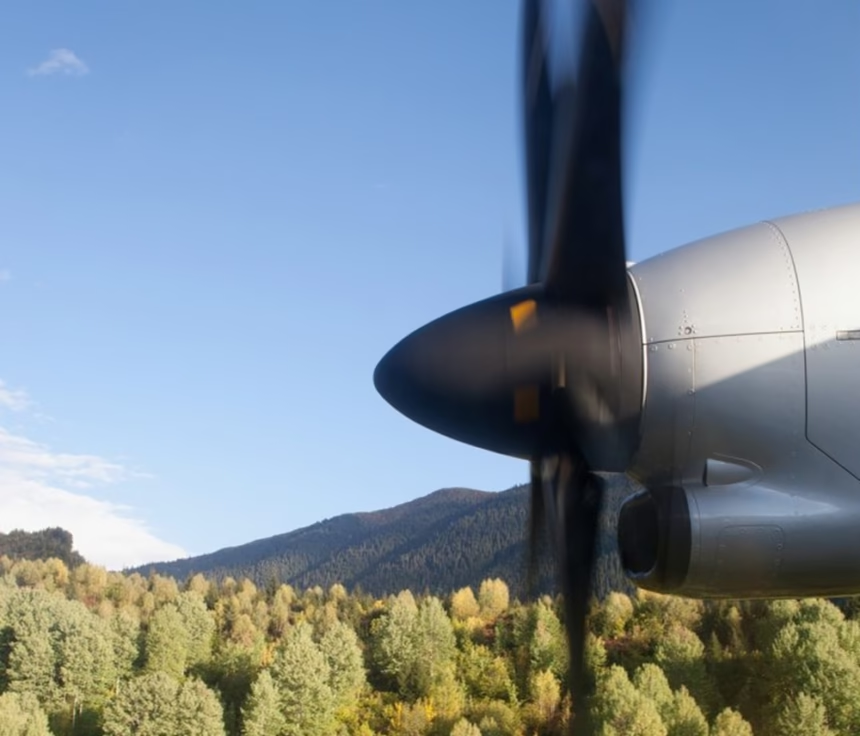Regional flights have become a cornerstone for connecting cities, towns, and territories that would otherwise remain isolated. Companies like ATR are leading this transformation with their new-generation turboprop aircraft, designed to carry up to 78 passengers efficiently and sustainably.
Beyond transporting people, these aircraft facilitate the movement of goods, medical supplies, and access to essential services in remote regions. Thanks to their efficiency, ability to operate on short runways, and low fuel consumption, the brand makes regional connectivity viable, reliable, and environmentally friendly.
How ATR turboprops strengthen regional connectivity
ATR turboprop aircraft, such as the ATR 42-600 and ATR 72-600 models, are specifically designed for short and thin routes where regional jets either can’t operate or can’t operate profitably. This allows airlines to operate flights to remote islands, mountainous areas, or secondary cities, connecting communities with economic and tourist centers.
Their ability to land on short or unpaved runways opens new opportunities where none existed before, enabling people to connect, businesses to thrive, and essential services to be delivered smoothly.
Efficiency and sustainability: a commitment to the environment
The efficiency of ATR aircraft is remarkable: they consume 45% less fuel and emit 45% less CO₂ than similarly sized regional jets. This efficiency, combined with the progressive integration of Sustainable Aviation Fuel (SAF), positions ATR as a leader in responsible aviation.
The company aims to certify its entire fleet to operate with 100% SAF by 2030, significantly reducing the carbon footprint of its operations. In addition, the ATR EVO concept envisions hybrid propulsion with improved aerodynamic efficiency, reinforcing the commitment to low-emission air connectivity.
Economic and social impact in isolated regions
Beyond sustainability, these aircraft have a direct impact on regional economies. They facilitate the transportation of workers, tourists, and entrepreneurs, boosting local trade and tourism. They are also essential for delivering medical supplies and humanitarian aid to hard-to-reach areas.
In regions where ground transportation is limited or slow, these aircraft become a vital link that ensures social inclusion and economic development, helping reduce inequalities and strengthen communities.
Innovation and technology serving aviation
The company continuously integrates technological improvements into its aircraft. The incorporation of Pratt & Whitney Canada PW127XT engines has improved fuel efficiency by at least 3%, while modern cabin design ensures passenger comfort.
The company also works closely with engine manufacturers, fuel suppliers, and regulators to accelerate the adoption of sustainable solutions and guarantee more responsible, more reliable operations.
Global presence and operator support
ATR not only manufactures aircraft but also maintains a global network of service centers, warehouses, sales offices, and training hubs. This ensures that airlines operate efficiently and with close support, adapting to the local needs of each operator.
Its strategy includes collaboration with communities, regulators, and policymakers to promote responsible connectivity and enhance the competitiveness of regional transport worldwide.
The future of regional aviation
The focus on sustainability, innovation, and efficiency is redefining regional mobility. With its fleet of turboprop aircraft, the company enables more affordable, responsible, and accessible flights – connecting communities, driving local economies, and fostering social integration.
Through its commitment to SAF, energy efficiency, and emission reduction, ATR is paving the way toward a more inclusive and future-ready regional aviation industry.
Related News:
Virgin Atlantic Announces Direct Flights from London to Phuket














